Is a Spring Bear Hunt for You?
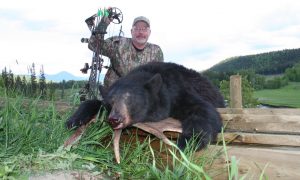
Spring or fall, bear hunting has it all, but the opportunities presented by a spring bear hunt can be amazing, with sightings of dozens of bears per week a common occurrence. Here are three great options for bear hunting this spring. By Bernie Barringer Until I got into bear hunting, I always thought spring was for fishing. Not anymore. I am totally in love with spring bear hunting and I can’t imagine a year without it. My first spring bear hunt was a bait hunt in Manitoba, and from there I have done several more bait hunts, plus a spot & stalk hunt in British Columbia and hound hunt in Idaho. You could say I am hooked on spring bear hunting. When speaking of spring bear hunting, the number one thing that comes up seems to be the number of bears seen. While a fall baited bear hunt in Canada may produce sightings of bear every day, spring hunts seems to produce multiple sightings and much more interactions at the bait. That British Columbia hunt I mentioned earlier? I shot the 42nd bear I saw on the six-day hunt. In addition to the sheer number of active bears in the spring, the hunts usually feature pleasant weather and some combination of fishing along with the hunting. Let’s have a brief look at the three options. Spot & Stalk Most spot & stalk hunts take place in the western US and Canada. The open country is conducive to spotting bears from a distance and then putting the sneak on them. I am exclusively a bowhunter, which presents a significant challenge in comparison to a rifle hunter, but that’s a challenge I will gladly accept. Your days will be spent driving and walking logging roads, glassing logging cut blocks and clearings. My BC hunt with Eureka Peak Outfitters was characterized by equal amounts of driving through stunning beautiful mountain country and hiking deactivated logging roads. It was a nice mix and very productive. When we needed a short break from glassing, my guide stopped off at a mountain stream or beaver pond where we caught rainbow trout on literally every single cast. I loved this hunt and I would do it again in a heartbeat. These spring hunts are available in Alberta, BC and Yukon, and in the states: Idaho, Arizona, Montana, Washington, Oregon, New Mexico and Wyoming. Hound Hunting If you love dogs and are up to an athletic hunt packed with adrenaline and close encounters with bears, this hunt is one you definitely need to put on your life list. Nearly 20 US states offer hound hunting, but, with the exception of Maine, the majority of the spring hound hunts are found in the Western mountain states. My spring hound hunt was with Reggear Outfitting in Idaho and I shot a nice bear in the first hour of the hunt. I could have passed that bear but it was just too perfect. Travis Reggear, like most reputable hound outfitters, runs nearly 100% success rate. This type of hunt is not for the sedentary because it often involves climbing steep hills, riding ATVs over rough terrain and crashing through brush to get to treed dogs before the bear decides to bail out of the tree. And that’s all before you shoot the bear. Once the bear hits the ground, you have to get it out, which can be just as tough or tougher depending on where the bear trees. This adrenaline-packed style of hunting is addictive so be forewarned about that! Watch this video to get a feel for what Idaho hound hunting is like when everything goes right! Bear Baiting Hunting Bears over bait is often frowned upon by those who have no experience with it. Put out a pile of donuts and get ready to shoot a bear, right? Nothing could be farther from the truth. Hunting bears over bait is a challenge. Getting a mature bear to come into a bait site when a hunter is present can be difficult and having that bear approach during daylight is often a difficult challenge. But if you choose and outfitter with bait sites in remote wilderness areas where the bears have little to no experience with humans, the challenge is not insurmountable. Across Canada, Outfitters put out baits before the bears come out of hibernation, so when the bears are ready to eat, the food is ready for them. These bait sites often become hubs of activity for bears in the area. There is a lot of interaction which increases the chances of bears coming in during daylight. Couple that with the fact that it is daylight until 10:30 at night during the spring, and you have a recipe for seeing a lot of bears. In many cases, you will have a choice of which one you want to take. I have hunted spring bears with several outfitters in Manitoba and Saskatchewan and am always amazed at the number of bears I see. The opportunity to witness interactions between bears and their behaviors is not only educational but exhilarating. I enjoy fall bear hunting too, but in the spring, the bait sites aren’t competing with the abundance of natural foods and I regularly see 2-3 times as many bears on a spring hunt as I do on a fall hunt. Put a spring bear hunt on your list, but be aware that spring bear hunting is addictive. The adrenaline value is high and it will keep you coming back over and over.
Amazing venison roasts and a bonus burger recipe
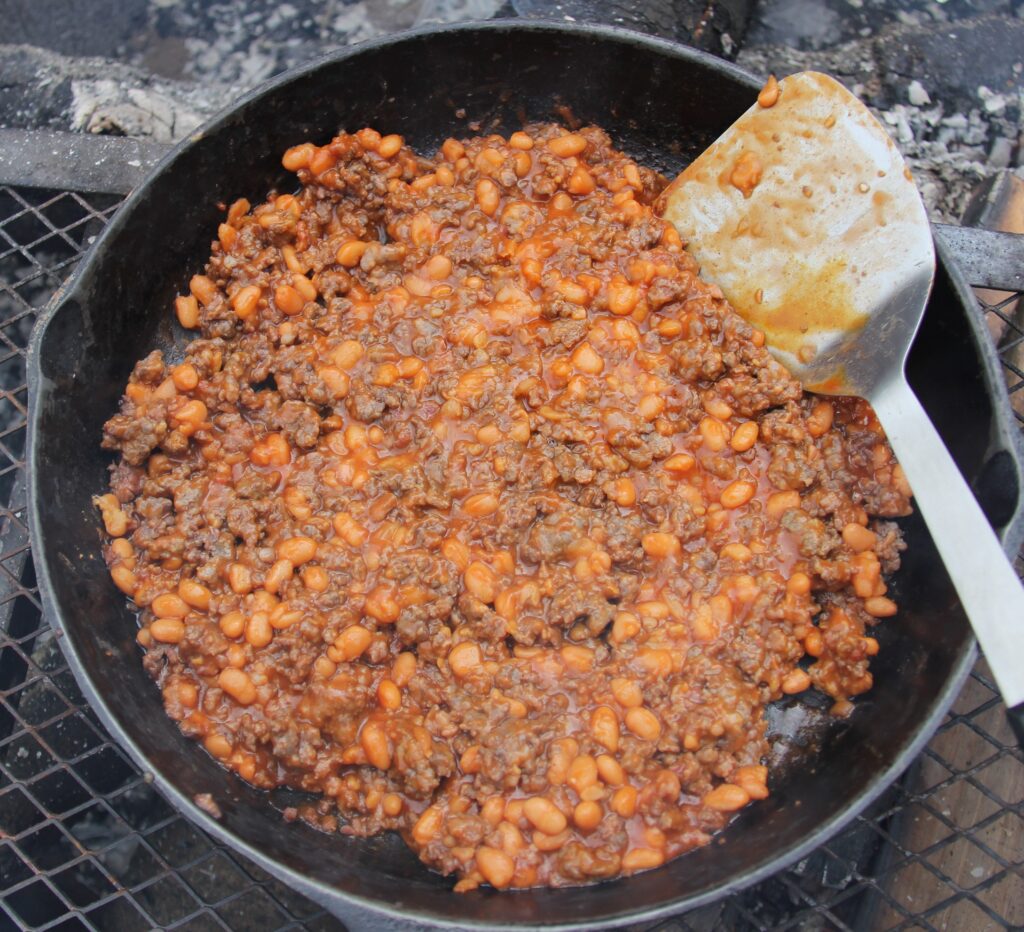
Delicious Venison Recipes Part 2 Here are two recipes–one for burger and one for roasts–that will have your mouth watering for more, and help you clear out the freezer for the next round of fine eating. By Bernie Barringer Many people have venison in their freezers for long periods of time because they really do not know how to fix it properly. That doesn’t happen at our house because the venison goes fast. I have a handful of recipes that I use a lot. My family, and occasionally my friends rave over the venison. So if last year’s deer is languishing in your freezer, or your family isn’t that fond of venison, I would like to offer a couple more ways to fix it that will change the way you view venison. Last week we talked about great venison loin recipes. This week I would like to offer you my favorite way of fixing the rump roasts and burger. Roast in the slow cooker Because venison is so lean, it is very difficult to cook roasts without having it dry out. The best way that I have found to cook roasts is to cook it slowly in a crock pot with plenty of water. Cooking it in water assures that it doesn’t dry out too bad. Plus the juices make terrific gravy to pour over the roast and some mashed potatoes for a traditional hearty meal. Start by placing the roast in the slow cooker and covering it at least ¾ of the way with water. The roast will cook down and settle as it cooks so the water will cover the entire roast. You will need to experiment with the brand and style of slow cooker you use. I have found that the taller crock pots work better for smaller roasts and the wider style work best for large roasts. I normally use a large roast for family meals, plus I love leftover cold venison roast sandwiches. I use bouillon to flavor the water which also flavors the roast while it simmers in the water. Use a beef bouillon cube for each cup and a half of water. Three cubes for 4-5 cups of water is what I normally use. Just drop them in alongside the roast. Dice up some garlic and onion and add to the mix, then cover the top of the roast with any other seasonings you may like. I have found that a generous sprinkling of Lawry’s Seasoned Salt creates a nice flavor. Experiment with other seasonings to suit your own personal taste. Cook the roast on low for about 6-8 hours. When it’s done it will fall apart when you remove it from the cooker. We often have this roast for Sunday dinner and I sometimes drop a frozen roast in the slow cooker the night before and put it on low. When I get up in the morning I switch it to the “warm” setting and it’s perfectly done when we get home from church. After removing the roast, use the juices left in the slow cooker to make gravy. Thicken with flour or corn starch for some of the most amazing gravy you have ever tasted. I can almost taste the roast and mashed potatoes slathered with venison gravy right now. Since venison is low in fat, the gravy is much better for you but it still tastes terrific. Cowboy stew I was introduced to cowboy stew by a friend who I camped with a lot in high school. Martin Vaage was probably only 13 at the time when he showed up with all the ingredients at our campsite and we cooked cowboy stew over the campfire. It has become a favorite meal for many years. I use it a lot when camping and we eat it at home all the time. It’s remarkably simple and a perfect quick meal. Start by browning a pound of venison burger. A little salt water in the pan helps it brown without burning. The water will boil away. Drain if needed. To the burger add one 15-ounce can of pork and beans, ¼ cup of ketchup and two tablespoons of Heinz 57 Steak Sauce. I like to add some onion to it also; usually a half a small onion diced. You can either sauté the onions in butter until they are limp in a separate pan, then add them to the stew, or just add some dried onion flakes (which is a lot easier if you make this dish while camping). Put the heat on low and simmer the whole mixture together for five minutes or so, stirring often. If you are making this dish on a campfire which I often do, move the pan off to the edge of the fire and keep stirring so it doesn’t burn to the bottom of the pan. Once the flavors are all blended together, spoon onto a plate or bowl and dig in. Everyone loves this dish and a couple pieces of toast to eat with it, especially campfire toast, complete a hearty meal that everyone will rave about! So go to your freezer and dig out that venison. With these ideas, you will enjoy some fine eating and your venison will not stay hidden in the corner of the freezer for months any more.
Perfect, Succulent Venison Loin
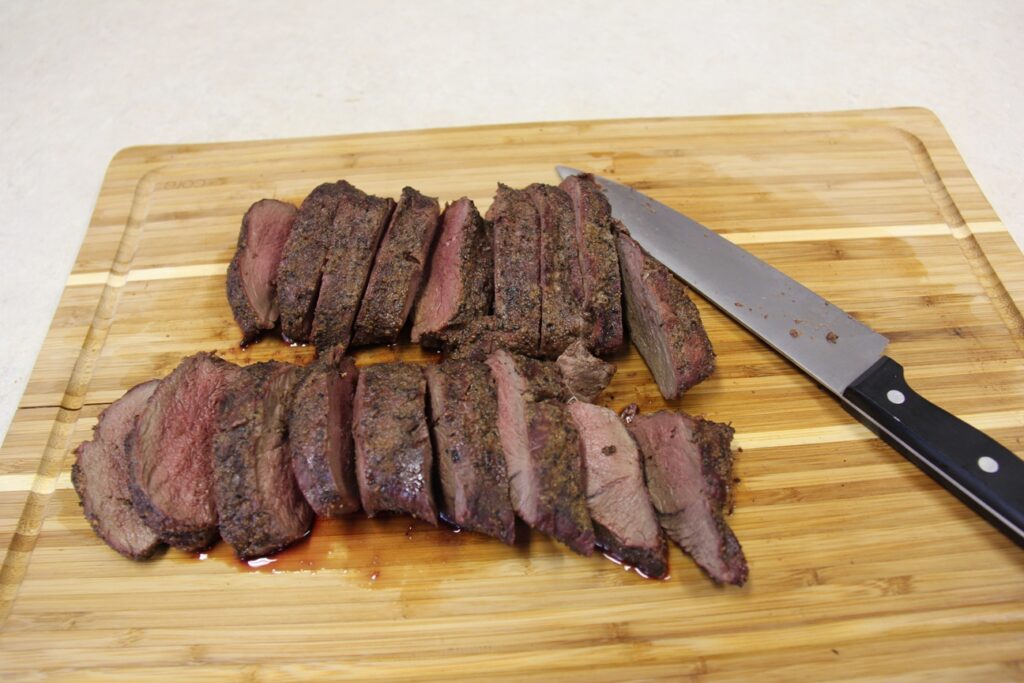
We are months away from the fall hunting season and you still have some venison in the freezer. Here are two recipes for venison loin that will have your mouth watering for more, and help you clear out the freezer for the next round of fine eating. By Bernie Barringer One of the best things about hunting is, of course, all the great meat free from preservatives and any other chemicals that might be found in store-bought meat. Wild game meat is organic, it’s “green” and it’s really good! I put three deer in the freezer last fall, and I am lamenting the fact that it’s almost gone. I make a lot of roasts in the slow cooker and a lot of the venison was made into breakfast sausage and burger. I also make a lot of sausage out of bear meat. But one of the best delicacies of all is the loins of the deer. Some people call them backstraps, but whatever you want to call them, they are tender and juicy and delicious. If you fix them properly. I primarily use the loins in two ways and I thought I would share with you how I do it and maybe it will help you enjoy your venison more by taking my advice. Add your comments to this post about how you like to fix your loins, I would love to hear them, I am always experimenting! The first thing I do is pat the loins down with a good venison rub. I often use High Mountain Seasonings Western Venison Rub. It turned out great, although it might have a touch too much black pepper for some people. I like to let the loins set at room temperature for 10 minutes or so while the rub soaks in before putting them on the grill. Don’t be afraid to use the rub liberally. Make sure the loins are fully thawed before cooking or they may not come out even. Once on the grill, I cook them slowly at about 300 degrees for around 20-25 minutes. I try to only turn them over once, and then back, but sometimes they need to be turned twice to get an even cooking. I use a meat thermometer to check the interior temperature. I rely more on the interior temperature than on the time on the grill. You do not want to overcook them, this is important. Venison has very little fat content and should not be overcooked. If you like it pretty rare to medium rare, you will want the interior temperature at 135-145 degrees. Well done is 160 degrees, but even if you like most meat well done, you may want to go with a little pink in the middle with venison. It is very lean and if you get it to well done it can be dry. If you let the interior get temperature over 160 degrees, you run the risk of it losing that tenderness that makes it so great. Slice the loins into one-inch thick steaks. The loins turn out juicy and soooo tender they practically melt in your mouth. This is some high living folks. Delicious and so good for you. The other way I love to make the loins is frying them in breading. Some people call it “chicken fried steak.” You will call it “delicious!” I make the breading by combing one cup each of flour, cornmeal and grated parmesan cheese. To that I add about two tablespoons of Lawry’s seasoned salt. Mix it up good and spread it out on a plate or large bowl. Then beat one egg into a half cup of milk and put into a bowl. The loins fry best if you flatten them with a meat hammer or at least slice them fairly thin and tenderize them. This allows them to cook all the way through before the breading burns. In a frying pan, preheat oil an inch deep to 375 degrees. Dredge the meat through the milk and egg mixture and let it drip mostly off. Then drop it flat on each side into the breading, pressing down to make sure you get a good coating. Slide the steaks into the oil and fry about three minutes on each side or until each side is golden brown. Be careful with the temperature of your oil. If it gets much over 400 degrees it will start to smoke and burn the breading. If it drops below 325 it will soak into the breading and add greasiness rather than turning it golden brown. These two recipes are guaranteed to be added to your favorites list. It’s hard to beat good venison loin for a meal that pleases everyone in the house. If you use these suggestions, chances are you won’t have any venison in the freezer at this time next year! Next week, I’ll give you two terrific recipes for venison roasts and burger.
6 Tips for finding more shed antlers
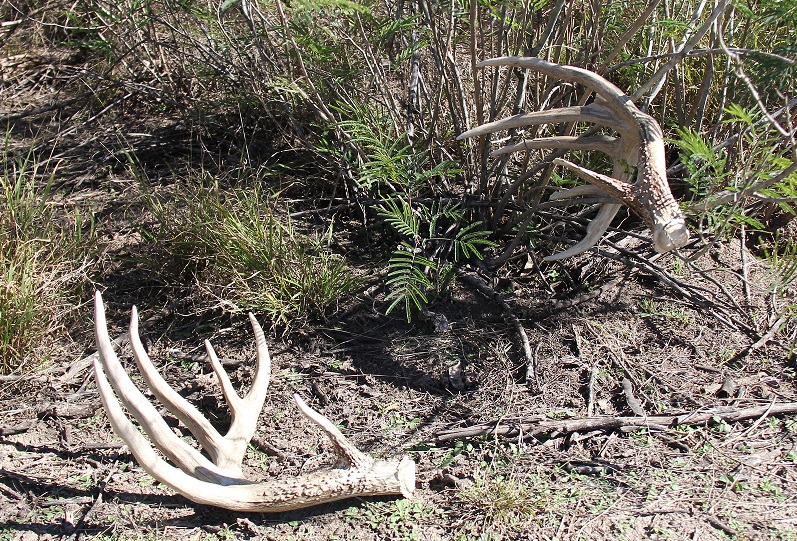
This short video describes and illustrates the importance of these six things in shed hunting The importance of high-carbohydrate foods Understanding thermal and solar bedding cover Look for obstructions and where deer jump over things Put some effort into looking for the matched sides Slow down and really analyze what’s around you Go early and often; get them before the other guy
The Saga of “Superbuck”

Hunters are often faced with ethical dilemmas. While hunting in Texas, one hunter made a wrong turn when faced with temptation and it cost him more than he ever imagined. South Texas is unique in deer hunting in that large ranches are managed for producing big whitetail bucks through carefully regulated harvests of mature deer, culling of deer and feeding of protein and minerals. Many ranches have their own set of laws and rules regarding deer hunting that go above and beyond the laws set by the state wildlife authorities. Jim Stinson holds one of the 10,000-acre leases on the 130,000-acre Duval County Ranch, and he subleases it to 8-9 other dedicated big buck hunters who pay $10,000 each per year for the right to hunt on the lease. They also participate in the feeding and care of the deer, which includes predator control, culling inferior bucks and keeping the water flowing so the deer have plenty to eat and drink during the area’s notoriously hot seasons. One of the hunters who enjoyed the fantastic hunting privileges on this lease was Jim’s friend Skip Weiner of Boise Idaho. Skip had been hunting there for nearly a decade. Bucks are allowed to reach the age of at least five or six before they are shot so they have a chance to reach their full potential. The hard work and restraint paid off well, as many dandy bucks were shot each year, and there was always the hope that one of them would blow up into a real giant. That’s exactly what happened. A buck they knew to be only three years old had an outsized, jaw-dropping rack. In fact it was as big as anything they had ever shot on the ranch, and it had three more years to grow. There was a lot of excitement as the buck turned four years old. This is the age when whitetail bucks normally take a big jump in antler size because their body mass has completed its growth and the deer can put its full energy into growing a rack. They were not disappointed. The buck was a true giant at four years old. The hunters spent considerable time analyzing video and photos of the buck; they determined that the deer would score over 200 inches at four, and was certainly not done growing yet. Clearly this was a deer with world class potential. They named the buck “Superbuck” and it was on everyone’s mind all season long. The buck was quite predictable and visible, which is unusual for a giant like this, but then he was only four years old, still young and naïve. He was seen several times that fall in an area of the ranch where they had protein and corn feeders. Normally the buck would be off limits until it was six years old, but a pact was made among the hunters that the buck would be allowed to live out its natural life and spread its genes into the gene pool for as long as it lived. This was a very difficult decision, but it was subject to change if they determined that the buck would be a world record at age six. They might decide to cash in the chips. The ranch’s management policy requires that the trophy bucks are shot after the rut, so the hunters cannot kill the big bucks until the end of December through the end of season the middle of January. This strict policy is heavily enforced. All bucks shot must be checked in at the ranch headquarters where they are weighed, aged, scored and recorded. Taking a buck off the ranch without going through the check in is illegal. Most of the hunting was done on the weekends. In January, most all the hunters are in camp on the lease, hunting hard to kill one trophy and one cull buck (Texas allows two buck tags per season). At the end of the weekend in question, everyone packed up to head home for a work of week with plans to come back again the next weekend. Except Skip Weiner, who didn’t actually leave. He went hunting. After a few weeks, it became clear that Superbuck was missing. Spring came and the bucks were growing their antlers but Superbuck was nowhere to be found. Could he have moved to another area of the ranch? Could he have been dragged down by coyotes? Jim had his suspicions, and he shared them with wildlife authorities. Because Jim suspected that the buck was in Idaho, the Texas Parks and Wildlife was limited in what they could do. So Jim hired a private investigator. The PI spent some time following up on leads, checking with taxidermists and observing behavior. He paid particular attention to Weiner who was at the top of the list of suspects if Superbuck had been illegally killed. Weiner flew down to Texas, collected all his belongings from deer camp and drove them back to Boise, a move which Jim thought was odd since Skip had been such an avid hunter on the lease for so many years. He felt his suspicions were being confirmed. Then the private investigator got a break. Skip’s house was listed for sale. Posing as a potential home buyer, the PI went to have a look around. Imagine the shocked look on his face when his gaze landed right above the fireplace, where Superbuck’s mount hung for all to see. It was time to get the feds involved. There is a long list of violations involved above and beyond not tagging and checking in a deer, including a violation of the Lacey act which imposes strict penalties for taking an illegal game animal across state lines. Federal authorities have no sense of humor when it comes to this type of thing. Armed with a search warrant, federal game wardens entered Skip Weiner’s house on Christmas Eve, and confiscated the buck. The mount is now back in the hands
Six Reasons Spring Scouting Means Big Fall Bucks

A serious hunter’s work is never done. Springtime is one of the best times of the year to get out in the woods and learn some things about your hunting area that you couldn’t learn at any other time of the year. By Bernie Barringer Springtime is not just for fishing and turkey hunting. Serious whitetail hunters crave opportunities to learn more about whitetails year-‘round, and I’m one of them. Those first nice days of spring when the snow melts off and the woods are coming alive with life once again are great times to get out to the properties you hunt and look them over. You will be surprised at what you will learn. Here are six reasons I like prospecting for bucks in the springtime. Spring scouting helps me learn how deer use terrain features. During the fall, leaves are dropping, which covers up a lot of the sign. Trails that are indistinct during the late summer and fall are glaringly obvious during the spring before plant growth is working against you. Deer tend to follow the same terrain features generation after generation, and the springtime is the best time to get out there and see where the well-worn trails are found. You will not only learn things about their travel patterns on that particular property, but you will learn things about how deer use the topography and terrain that will help you diagnose the movement on other properties. Scrapes, rubs and other rut sign is still there and easy to see. Now is the time to spend analyzing how the rubs are laid out in a specific pattern. In the fall, you walk right by them because you want to spend your time hunting. In the spring, you can really work the puzzle out. Take note of which side of the tree they are on and see if several rubs line up with the markings on the same side of the tree. You have just found a buck’s travel way. Signpost rubs and groupings of scrapes show you where a buck spends a lot of his time. Collections of several rubs in one small area may indicate a preferred bedding area. Bucks tend to rub a few trees when they rise from their beds in the afternoon, and their sanctuaries will often have several dozen rubs in less than an acre. A spot like this could be a gold mine come fall. In the spring, you can walk right into the bedding areas and sanctuaries without worry about damaging your hunting prospects. You would never walk right into the deer’s bedding area during the hunting season for fear of moving the bucks entirely out of the area. No such worry in the spring because your intrusion will be long forgotten by the season. Wade right in and look it over good. Make some improvements by hinging a couple trees and piling up brush. I know one hunter who carries a bag of grass seed and seeds good bedding cover as he scouts these areas. Combine your scouting with shed antler hunting. Keep in mind that the place a buck drops his antlers may have little to do with his fall patterns, because his winter patterns revolve around food, whereas the fall patterns revolve more around interactions with does and other bucks. But picking up shed is fun and it allows you to get an idea which bucks made it through the winter. Spring is the time to put out mineral licks. I put out mineral as soon as the show is off the ground and the deer use the mineral licks all through the spring and summer. The mineral not only offers the deer healthy diet enhancement, but it allows you to inventory the deer with trail cameras placed at these mineral sites. One good mineral lick maintained regularly should be on each piece of property, and for large properties over 300 acres, two sites is even better. Once you have found great looking places to hunt with lots of deer activity, put up some treestands. Putting up stands and trimming shooting lanes in the spring offers the chance to spend the necessary time in the woods without the worry of leaving human scent all over the area. By putting up stands early, there is plenty of time for the scent intrusion to dissipate. Your cuttings, tracks, trimmings and markings are long forgotten by fall. You may have found a place that will be a great hunting location year after year, now is the time to get a stand in position and take advantage of it. So take some time out from fishing or turkey hunting this spring and get into the woods. The work you do now might make the difference between holding a nice buck in a photograph versus holding an unfilled tag come next fall.
Six Myths in Deer Hunting That Need to Die
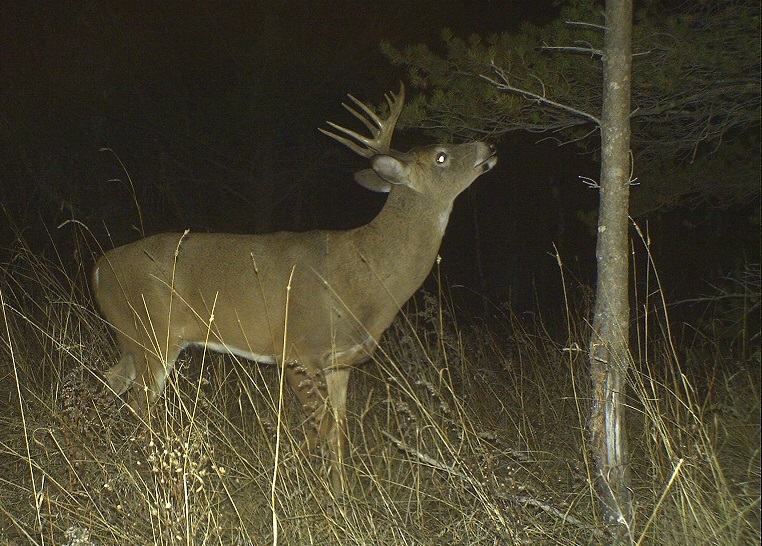
These six long-held beliefs are based on lies or flawed science. Time to put them to rest. By Bernie Barringer Hunting is largely generational so many concepts get passed on down through families. Most of this is solid hunting information that helps newcomers be more successful, but there are some myths that are passed along as well. Scientific studies can take a small sampling and extrapolate a conclusion that is only accurate in the study area, or is missing just one important part that taints the results of the entire study. Good science can also prove a myth wrong. Not all of the six myths that follow fall into these two categories, but in most cases, the myths have a small nugget of truth that just got twisted or misinterpreted. Here are six myths that need to go away once and for all. You must cut a deer’s throat as soon as possible after it is shot. I suppose this myth got started back in the day when blood was eliminated from the carcass of a hog or cow when it was butchered. The prevailing thought was that draining the blood would improve the quality of the meat. What naturally followed was that the best way to kill it was for it to bleed to death. Arrow-killed deer and most bullet-killed deer die from blood loss. Any blood that isn’t lost as they die will drain when the animal is field dressed and hung. There is no need to slit the deer’s throat. It will just make your taxidermist angry. How many times have you heard that bucks only travel into the wind? This bit of hunting lore gets repeated so often that it is taken as Gospel by many hunters. If my area of Minnesota has four straight days of northwest wind for example, all our bucks would be in North Dakota. Sounds silly of course, but think about how a buck must spend its days. He has to eat every day and his trails simply do not allow him to put his nose into the wind and go. It’s true that bucks prefer to quarter into the wind when it’s convenient to do so, they feel comfortable when doing so. But I have seen bucks readily travel with a tailwind, even enter their bedding cover with the wind at their back. I believe they travel confidently when they can see what’s ahead of them and smell what’s behind them. Rarely do spooked bucks turn and run into the wind. They usually go back the way they came from or take a direct route to security cover. Buck travel into the wind when the conditions allow, at all other times, they move with the best possible advantage that gives them confidence. Deer are colorblind and only see in black, white and shades of gray. Most likely this prevailing myth comes from the realization that deer weren’t seeing hunters wearing blaze orange. When blaze orange laws became the norm a half-decade ago, hunters were surprised that the deer didn’t seem to pay any more attention to them than when they were wearing any other article of clothing. Scientists have dissected the deer’s eye and analyzed the rods and cones to determine which colors deer can see. Turns out they see the blue end of the spectrum much better than humans do, but they can detect very little of the red end of the spectrum. They see blues and greens in brilliant display, in fact they can see ultraviolet colors that humans cannot see. Reds and oranges are subdued to the point that they may not be able to distinguish the colors from gray. So, if you head out into the woods in blue jeans and an orange coat, the deer will barely detect the orange, but the blue jeans will jump right out at them. Several scientific studies have been published showing that bucks only check scrapes at night. These studies involved putting trail cameras on scrapes and recording the times the bucks visited and worked the ground at the scrape and the overhanging branch that is present at nearly all scrapes. These results of these studies recorded that 80% or more, and in some studies, more than 90% of the visits were under the cover of darkness. This has led a lot of hunters to believe that hunting over scrapes has no value. Each of these studies have one common flaw. The cameras were only placed on the scrapes themselves. Bucks often check these scrapes in the daytime, they just do it from 20-40 yards downwind. They move downwind of the scrape and take a whiff, then only approach it if they detect something that really get’s their attention. Most primary scrapes are made on the edge of a field or opening, under and overhanging branch. Bucks simply are not willing to expose themselves to the open area during daylight unless there is something truly compelling in that scrape. Whenever possible they will simply check them from the nearest downwind cover and then move on. Now you have some information that will help you hunt scrapes much more effectively. My earliest bowhunting mentor was a neighbor named Jim, who took me bowhunting before I was old enough to drive. He loved to hunt mornings and he was adamant that we get in the stand at least an hour before first light, and 1 ½-2 hours was even better in his way of thinking. I remember him telling me that it gave time for our ground scent to dissipate and the activity of the other woods creatures to get back to normal. It made all kinds of sense to me at the time, and I figured the fact that we spooked a lot of deer on the way in was simply a necessary trade-off. In fact, I loosely followed that rule for 30 years. But a few years ago, I started really analyzing that tactic and changing my morning
Stop Dreaming, Start Hunting! Overcoming 3 Main Excuses
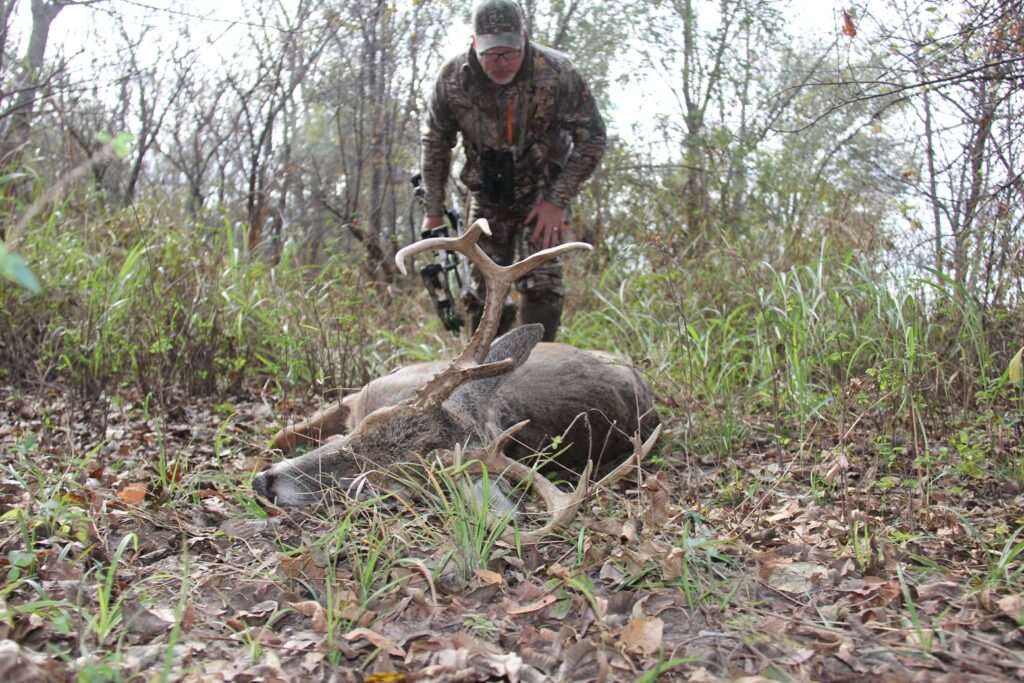
You’ve seen the amazing whitetail deer hunting on the outdoor TV channels. You know your chances of shooting a mature buck like the ones you see the show hosts shooting at home are not very good. Yes you can go to the destination states and shoot a nice buck. Here’s some encouragement and some solid advice. By Bernie Barringer The explosion in popularity of outdoor television in the past 15-20 years has causes some significant changes in the landscape for hunters. No doubt it has created a surge in popularity and outdoor TV has also launched some products that wouldn’t have seen the same quick growth if they didn’t have the mass medium of TV to get their message to the masses. Another noticeable impact of hunting television shows has been the eye-opening revelation about what’s available when it comes to deer hunting across the whitetail’s range. Hunters from Michigan, Pennsylvania, the East Coat and the Southeastern US suddenly because aware that the bucks they were shooting were puny compared to those being shot in the Midwest where they have much better habitat and are allowed to grow to maturity. Take Iowa for example. Before the Outdoor Channel became a household name, Iowa’s 6,000 nonresident deer tags just filled up each year. When TV hosts began shooting big bucks in Iowa, that rapidly changed. Today, expect to wait 3-4 years while increasing your drawing odds before you will draw a nonresident archery tag. Nearly 20,000 applicants throw their name into the hat each year. Some states, Illinois and Kansas are examples, just increased the number of tags to meet the growing demand. Still there are hundreds of thousands of whitetail deer hunters still watching the big bucks on TV while dreaming about taking a trip just once to have a crack at a the kind of mature whitetail they would never have a realistic chance to shoot at home. Some hunters feel they can’t afford the trip, others simply do not know where to go, and others still are just intimidated by the thought of setting off to lands unknown to hunt in an unknown area. Well, if you are in one of those three categories, consider this your wake up call, because I am about to crush your excuses. Excuse #1: I Can’t Afford it If you can afford to shell out $3,000-$4,000 for a good outfitter in the Midwest, then more power to you, but that’s more than most of us can justify. A Do-it-Yourself (DIY) hunt is the best and possibly the only option. You can do a hunt on a lot less than you think. Your primary expenses are going to be the deer license, gas, lodging, and food. You have to eat whether you are at home or off on a hunt, so food costs are minimal. I often use a crock pot and toss a complete frozen meal into it when I leave in the morning, so I have a hot meal waiting for me when I get back from the day’s hunt. BBQ ribs, roast and potatoes, chicken breasts, you get the idea. Another option is to carry a small microwave to heat up some oatmeal for breakfast and a hot meal at the end of the day. You’ll hunt longer and harder if you are eating well. Most of the small towns in the rural areas where you will be hunting have motels that cater to hunters and they are priced accordingly. I usually find one for less than $50 per night and I’m often able to work a better deal if I book several nights at once. Another option I have used is to pull a travel trailer. Many states allow you to camp for free in the parking areas at public hunting grounds. There are no facilities of course but if you have a self-contained camper or you are willing to rough it in a tent, your expenses are next to nothing. That leaves your gas and your deer tag expenses. Just start saving now and be ready when the time comes; squirrel away a couple twenties a week and you will have your trip paid for in a year or less. Excuse #2: I Have No Idea Where to Go Here’s where I can help. I wrote a book entitled The Freelance Bowhunter: DIY strategies for the travelling hunter. Two-thirds of the book covers how to hunt on a budget and how to figure out a new property along with strategies for taking public land bucks. The othe r third details the hunting opportunities in the 16 states I call “destination” states for whitetail hunters. It covers the counties that produce the most Pope & Young bucks, the availability of public land, what times are the best to go, how to draw a tag, etc. Also covered in the book are the properties that are not public but are open to public hunting. Two examples are the Private Land Open To Sportsmen (PLOTS) program in North Dakota, and the Walk In Hunting (WIHA) lands in Kansas. Several other states have similar programs and I have found that these lands do not get as much pressure from deer hunters as other public hunting lands. Some states have public lands that get a lot of bowhunting pressure, such as Illinois and Wisconsin, while others like the Dakota’s, Iowa, Nebraska and Kansas have abundant state and federal hunting land where the pressure is likely to be much lighter than you have at home. The internet is an amazing resource for finding a place to hunt. Check out the states’ DNR websites for lots of information. Spend some time on state hunting forums and ask questions. You might think that locals would be reluctant to help you find a good hunting area, but surprisingly I have found the ones who try to discourage you to be in the minority. Use Google Earth to analyze properties for their potential and even start to
Alaskan Game Camera video
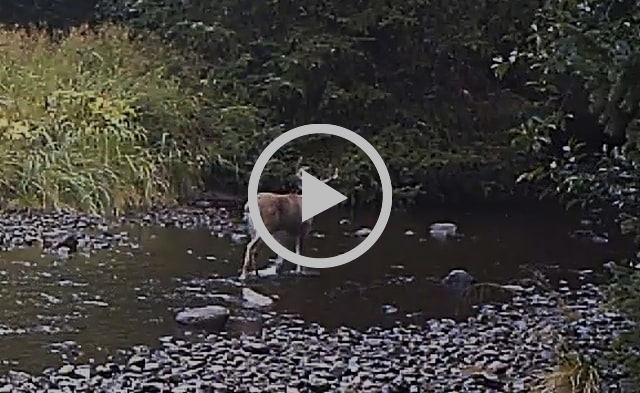
This is the first of three game camera videos taken by former Alaskan guide Hugh Bevan in Southeast Alaska. We will be sharing all the over the next couple weeks. Pretty cool stuff here folks. Enjoy! Little Creek from hugh bevan on Vimeo.
Is there value or harm in winter deer feeding?
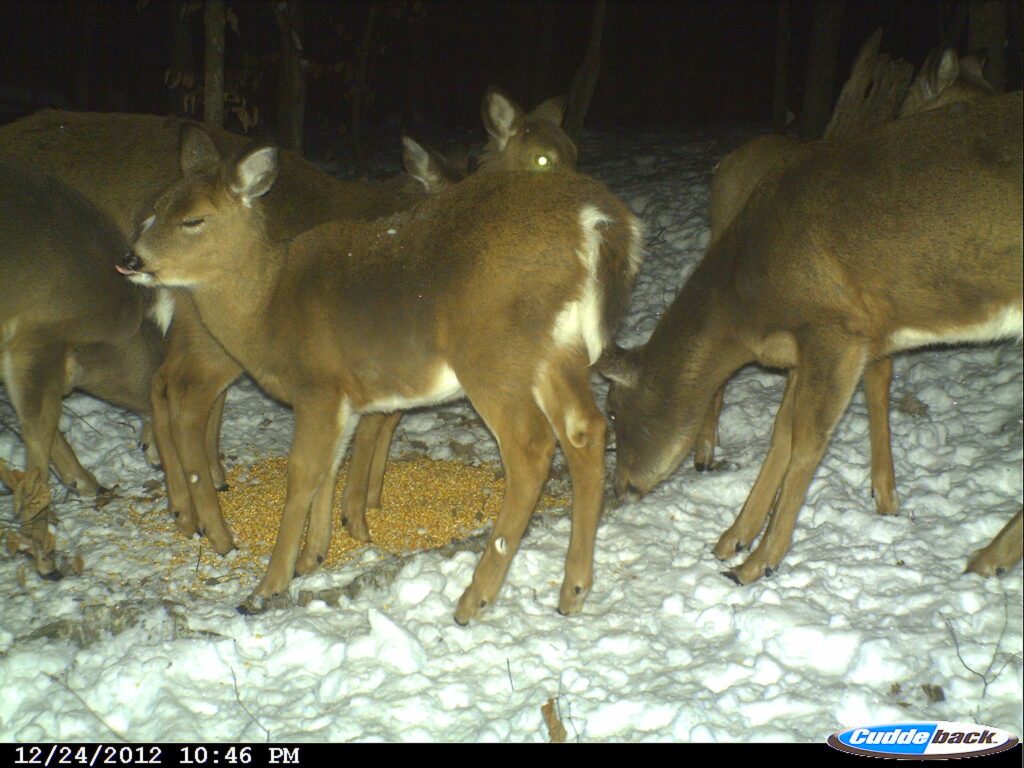
Like many states, The Minnesota DNR has often been opposed to recreational deer feeding, and in fact, with the increased risk of Chronic Wasting Disease and other disease transmissions, there have been discussions about banning it. The winter of 2014 was very difficult winter for the deer northern Minnesota. Deep snow and cold temperatures created conditions where the predators had a heyday with the stressed deer. In many cases wolves moved into certain areas and slaughtered far more deer than they could ever eat. Deep snow made finding food extremely difficult and deer were near starvation by February and March. Despite the fact that the state of Minnesota DNR as often been opposed to winter deer feeding they mobilized volunteers across much of northern Minnesota with snowmobiles to feed corn to the stressed deer herds. Near my home there was a 20-acre cornfield that did not get harvested before the snow came. There were 60 to 70 deer feeding and that cornfield every night. I had a discussion with a DNR officer about recreational deer feeding about that time. He felt strongly that recreational deer feeding concentrated the deer into areas where they could more likely transmit diseases. My question for him was this, “There are 70 deer feeding in this cornfield; they are nibbling on the same branches, eating fecal matter and chewing on the same corncobs. Wouldn’t it be better to have those deer spread out into a dozen smaller recreational feeding sites at the homes of the adjacent landowners rather than have them all bunched up in one place? Wouldn’t that cause a reduction in potential transmission of diseases rather than an increase?” Neither one of us really have a definitive answer to that question. These are just a couple examples of the controversy that surrounds recreational feeding of deer. Let’s take a look at some of the pros and cons. Acclimation to Humans Opponents of deer feeding feel that providing handouts for deer can make them more vulnerable to negative human influences. In some cases this may be true, and there are specific instances where deer feeding in the wrong areas has caused significant increases in roadkills. Deer feeding during hunting season can concentrate deer into areas where they are more vulnerable to hunters. But ask anyone who has hunted for deer over bait in states where baiting is legal and they will tell you that putting deer in a position where it’s easier to shoot them is a lot easier said than done. Deer quickly learn when they are being hunted and will go nocturnal. Many states allow baiting of deer but very few mature bucks are killed this way. The human intrusion associated with putting the bait in place is simply more than a mature buck will tolerate. Even younger deer and does learn quickly that feeding under the cover of darkness is their best survival strategy. One significant issue with feeding deer is the consistency. One of the worst things that can be done is to provide a food source on which the deer become dependent, and then stop feeding for a long period or quit altogether. Either of these can put the deer at significant risk. If the deer are relying on you for a daily food source, do not let them down. Concentrated for predation Human predators and not the only threats deer face. Deep snow can cause deer to bunch up around the available food. Particularly across the northern states, deer yards create easy opportunities for predators. When snow makes it difficult for deer to move around, the predators can move in and make short work of an entire herd. I have personally seen this in northern Minnesota where a pack of wolves decimated a herd of more than 40 deer in one week. Wolves are controversial enough but when things like this happen, the anger rises quickly. Contrary to what wolf lovers would like you to believe, wolves do not kill just what they need to survive and no more. Put yourself in a wolf’s shoes (paws) for a moment and think of it this way: you know where there’s a lot of deer, so you go kill one and eat your fill. The next day you’re hungry again, so you go back and you have the option of gnawing on a hunk of frozen meat or, with very little effort, grabbing a hot meal. Which option sounds the best to you? That’s why wolves can wipe out so many deer in such a short time. Other predators also capitalize on vulnerable deer. Coyotes, mountain lions, feral dogs, even bobcats and eagles have been known to feast on the easy pickings. Keep these predators in mind when you choose your deer feeding location. It’s best to utilize several smaller feeding sites rather than one large one. Digestive Issues High-carbohydrate foods are needed to get deer through the winter because they produce quick energy and body heat. But radical changes to the deer’s diet can be harmful and in some cases fatal. Introducing a source of corn to very hungry deer when there is very little other food available can make it very difficult for the deer to digest the corn. When deer are feeding on woody browse, their stomachs are adapted to digest that type of food. They do not have the ability to change quickly in a sudden introduction of large quantity of high carbohydrate food can cause acidosis which can make them sick and in extreme cases can kill them. For this reason it’s best to introduce alternate food supplies well before winter hits so the deer’s digestive system have plenty of time to adapt. In cases where corn is being introduced to help starving deer it’s best to introduce small amounts of corn in multiple areas. Or better yet, introduce a mixture of feed with a mixture of carbohydrates and protein. Some companies make deer feed which includes other grains and proteins in addition to
